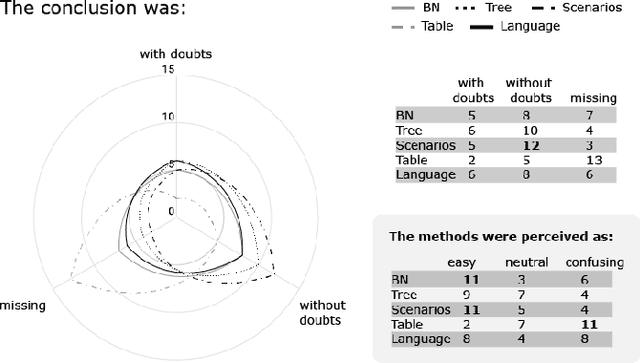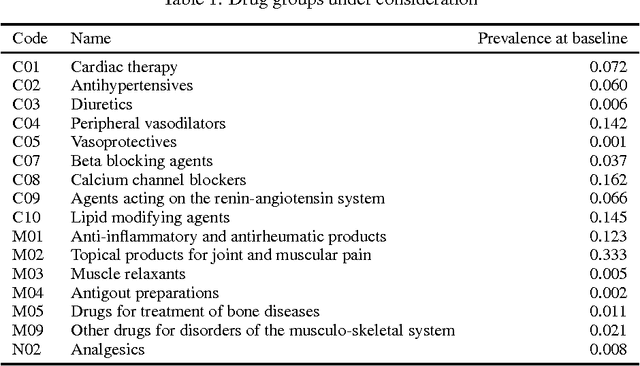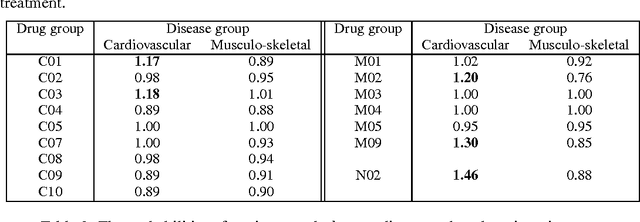Arjen Hommersom
What is understandable in Bayesian network explanations?
Oct 04, 2021
Abstract:Explaining predictions from Bayesian networks, for example to physicians, is non-trivial. Various explanation methods for Bayesian network inference have appeared in literature, focusing on different aspects of the underlying reasoning. While there has been a lot of technical research, there is very little known about how well humans actually understand these explanations. In this paper, we present ongoing research in which four different explanation approaches were compared through a survey by asking a group of human participants to interpret the explanations.
Measuring Adverse Drug Effects on Multimorbity using Tractable Bayesian Networks
Dec 09, 2016


Abstract:Managing patients with multimorbidity often results in polypharmacy: the prescription of multiple drugs. However, the long-term effects of specific combinations of drugs and diseases are typically unknown. In particular, drugs prescribed for one condition may result in adverse effects for the other. To investigate which types of drugs may affect the further progression of multimorbidity, we query models of diseases and prescriptions that are learned from primary care data. State-of-the-art tractable Bayesian network representations, on which such complex queries can be computed efficiently, are employed for these large medical networks. Our results confirm that prescriptions may lead to unintended negative consequences in further development of multimorbidity in cardiovascular diseases. Moreover, a drug treatment for one disease group may affect diseases of another group.
Checking the Quality of Clinical Guidelines using Automated Reasoning Tools
Jun 02, 2008



Abstract:Requirements about the quality of clinical guidelines can be represented by schemata borrowed from the theory of abductive diagnosis, using temporal logic to model the time-oriented aspects expressed in a guideline. Previously, we have shown that these requirements can be verified using interactive theorem proving techniques. In this paper, we investigate how this approach can be mapped to the facilities of a resolution-based theorem prover, Otter, and a complementary program that searches for finite models of first-order statements, Mace. It is shown that the reasoning required for checking the quality of a guideline can be mapped to such fully automated theorem-proving facilities. The medical quality of an actual guideline concerning diabetes mellitus 2 is investigated in this way.
 Add to Chrome
Add to Chrome Add to Firefox
Add to Firefox Add to Edge
Add to Edge